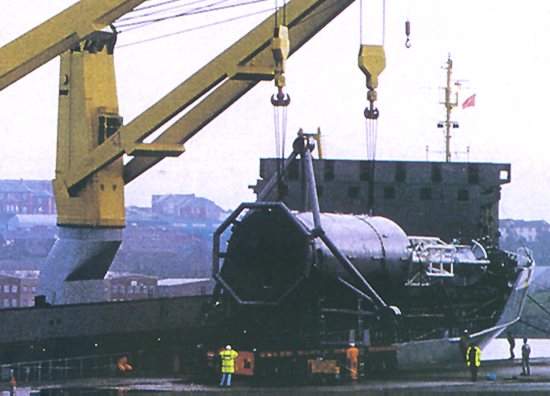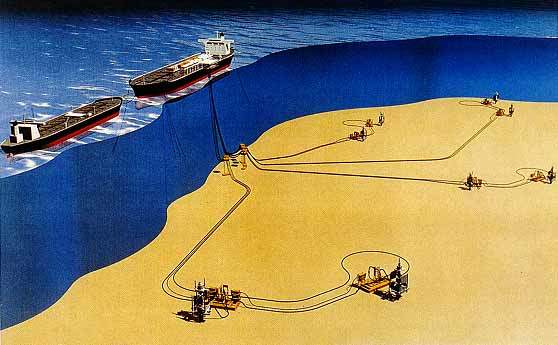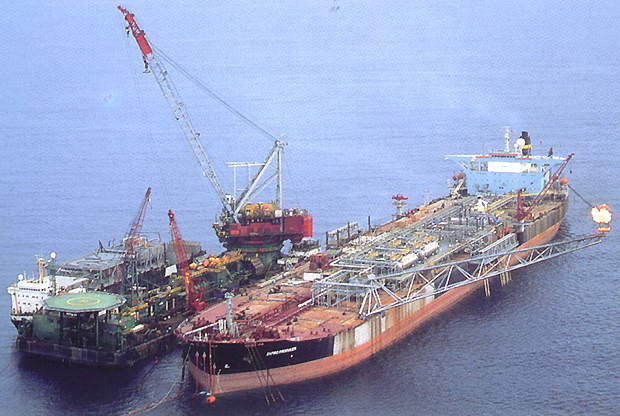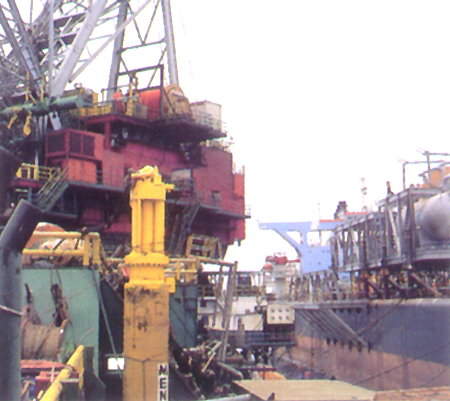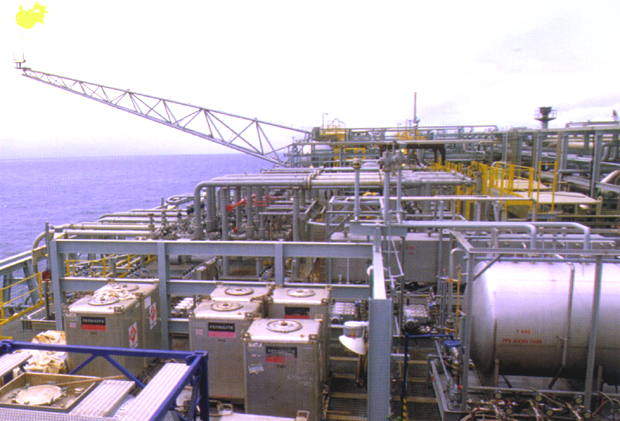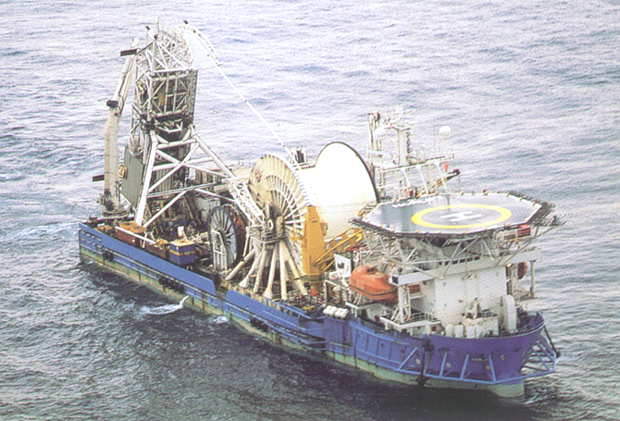Zafiro is located in the 500,000-acre Block B, 68km (42 miles) WNW of Bioko island, Equatorial Guinea, adjacent to the international border with Nigeria. Water depths range from less than 300ft to greater than 5000ft.
The Zafiro-1 discovery well was drilled in February 1995, testing at 10,400 barrels per day. Three subsequent wells showed the reservoir to be relatively shallow (around 5,000ft), and low pressure, with a bottom-hole shut-in pressure of 2,800psig.
The 268,191dwt VLCC (very large crude carrier) Swift was selected for conversion to the FPSO Zafiro Producer. The Swift was built in 1973, with an overall length of 331.5m, a breadth of 56m and a depth of 26.4m. It has a draught of 20.5m fully loaded, or 8.3m ballasted. It has a storage capacity of 1.4 million barrels.
The conversion was carried out at the HAM-PMB Bechtel yard, on Pelican Island. Early reservoir evaluation indicated that a 40,000 barrels per day (b/d) rate could be expected from the planned eight wells, requiring the installation of an 80,000b/d process plant, a 40MMSCFD gas flare capacity and storage for 1.7MMBBL of oil.
Included in the Zafiro Producer process design, is:
Subsea Chemical Injection System:
Separators: Three separators are used in the process system – a test separator rated at 15,000b/d and two first-stage production separators each rated at 40,000b/d. The production separators and all downstream production equipment are arranged in two identical parallel trains, for a total capacity of 80,000b/d.
Heaters and Exchangers:
Electrostatic Treaters: The electrostatic treaters are partitioned vessels with the front section of the vessel acting as the second stage separator.
Produced Water Treatment: A nominal 5,000b/d Corrugated Plate Interceptor (CPI) vessel is installed to treat produced water to less than 40ppm oil for disposal overboard.
Associated Gas Disposal: Gas from the test and production separators flows through the high-pressure knock out drum and to the flare for disposal. Fuel gas for the deck-mounted package boiler is taken as a side stream from the high-pressure gas. Low-pressure gas from the treaters flows through the low-pressure knock-out drum and to the flare for disposal.
Flare: The flare consists of a multi-point, subsonic and sonic flare tip mounted on a 250-foot boom (the longest boom yet installed on an FPSO) cantilevered off the port side of the ship
Gas Boiler: A 75,000lbs/hr gas fired boiler was installed as part of the production facilities to take advantage of the produced gas and provide steam to the process heaters and the various ship systems.
Mooring
The mooring system for the Zafiro Producer consists of 12 anchors ranging in weight from 20-24 tons, and 12 legs of 3 7/8in chain, pre-installed by Oceaneering and Aker Marine. The vessel offloads to shuttle tankers through a bow-to-bow tandem mooring system.
Subsea
The subsea facilities consist of eight subsea trees arranged on 2-well flowline loops, 24 miles of 6 inch flowlines, 12 miles of control umbilical, 8 flexible risers and 4 dynamic umbilical risers. For design simplicity and flexibility, field proven equipment and methods were employed wherever possible, leading to the use of a “standard” four-by-two subsea tree design, a direct hydraulic control system and chokes located aboard the FPSO.
Installation
The 6in flexible flowlines, 4in well flowline jumpers, control umbilicals, umbilical flying leads and the flexible risers were installed by two Coflexip Stena construction vessels, the Diving Support Vessels (DSV) Alliance, and the Flexservice-1. Pick-up wires were attached to the risers remotely, using an ROV and an atmospheric diving suit. The risers were keel-hauled under the FPSO to the port side, and pulled up into the riser porch funnels. When the FPSO arrived on location, 12 mooring legs were connected and tensioned, and the risers and umbilicals were retrieved.

